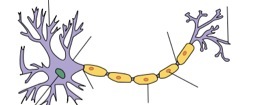Artificial Intelligence in Medical Diagnostics
2008
What is intelligence?
It is a question relevant far beyond the realm of science and mathematics, medicine and technology. Herrnstein and Murray provoked great debate with the publication of their 1994 book “The Bell Curve, arguing in favor of the value of intelligence according to a certain criteria. The Turing test attempts to answer the question of whether a machine is intelligent through dialogue: if a computer is in conversation indistinguishable from a human, it is intelligent.
And what is intelligence in the context of medicine? There can be no doubt that a high order of intellect is required to enter the medical profession, to become a board-certified doctor. The variety of knowledge, skills, aptitudes, all-round competence is such that no machine can approach performing the operations performed daily by practicing doctors.
As evidenced, however, by machines that play chess, generate new theorems in math, monitor complex signals for patterns, analyze data, machines can play valuable roles if the demands upon them are restricted and focused. Modern computer software can meet and even exceed experienced clinicians in diagnosis of diseases of particular types, can maintain vast and easily-searchable databases of patient information, can in short perform mundane but complementary tasks in the medical setting, and have found roles in, among other roles, diagnostic support systems (DSSes).
These pages will provide an overview of artificial intelligence applied to modern medicine. The last page includes a number of references, with editorial comments for certain entries.
AI: Artificial Intelligence

from cells to silicon:
a neuron, electrical activity in the brain, and HAL9000


UCI BME240, Spring 2008
James Greene
